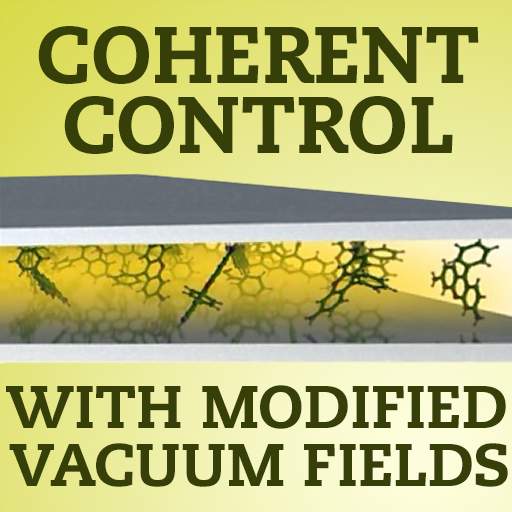Experiments in polaritonic chemistry have demonstrated that the collective coupling of molecules to a cavity can modify chemical reactions. These modifications could come from genuine quantum effects and the study of the full quantum dynamics is thus of high interest for such systems. Efficiently computing quantum many-body dynamics has been a very challenging goal and many attempts with...
Discrepancy between atomistic molecular dynamics and experiment can arise, among other things, from the difference in the number of molecules that are considered, making the direct comparison between simulation and experiment often ambiguous. Especially for investigating phenomena that directly depend on the number of molecules, such as strong coupling between light and matter, a meaningful...
The use of cavities to impact molecular structure and dynamics has become popular. As cavities, in particular plasmonic nanocavities, are lossy and the lifetime of their modes can be very short, their lossy nature must be incorporated into the calculations. The Lindblad master equation isommonly considered as an appropriate tool to describe this lossy nature. This approach requires the...
Strong coupling of organic molecules to the vacuum field of a nanoscale cavity can be used to modify their chemical and physical properties. We extend the Tavis-Cummings model for molecular ensembles and show that the often neglected interaction terms arising from the static dipole moment and the dipole self-energy are essential for a correct description of the light-matter interaction in...
In this presentation, we employ a numerically exact, fully quantum dynamical approach to systematically investigate the mechanisms underlying the rate modification of ground-state chemical reactions inside an infrared optical cavity under the vibrational strong coupling regime.
First of all, we've revealed that static quantum features such as zero-point energy and pure tunneling effects...
For aggregates of molecular monomers above layered surfaces, the dipole approximation breaks down when the distance between monomers and surfaces is less than several nanometers. To overcome this problem, we employ macroscopic quantum electrodynamics and use the complete transition current density of the individual monomers. Within this framework, the resulting Master Equation for the...
Vibrational Strong Coupling (VSC) has recently been shown to alter the rates and selectivity of polar chemical reactions –reactions in which electrophiles and nucleophiles combine. However, measuring reliable reaction kinetics under VSC remains an important challenge which hinders our ability to know which specific elementary properties of polar reactions are affected by VSC. We herein set out...
When light and matter strongly interact, polaritonic states with mixed electronic and photonic character emerge. As a consequence, new photochemical pathways become available under strong coupling conditions. In order to get insight on the mechanism underlying these modifications, theoretical studies using accurate ab initio methods are fundamental. In particular, Quantum Electrodynamics -...
Machine learning potentials have recently been used to simulate chemical dynamics under vibrational strong coupling, in order to gain greater insight into the underlying microscopic mechanisms [1]. These machine learning potentials are trained on data from density functional theory and are used to evaluate the forces during molecular dynamics simulations, which facilitates atomistic insight...
The interaction between matter and the quantum fluctuations of light in cavities can lead to novel exotic states of matter. Previous theoretical investigations into this area have produced conflicting outcomes, creating obstacles for further research. In this talk, I pinpoint the source of these discrepancies to the inherently divergent nature of local quantum light fluctuations in vacuum. To...
The ability to manipulate light at the nanoscale is greatly enhanced by the tremendous progress done in the field of plasmonic nanoparticles. Their high versatility enables the confinement and control of very strong electric fields, making these nanosystems ideal candidates for polaritonic states formation when combined with strong quantum emitters, such as molecular excitons. The resulting...
Experiments have demonstrated that vibrational strong coupling between molecular vibrations and light modes can significantly change molecular properties, such as ground-state reactivity. Theoretical studies toward the origin of this exciting observation can roughly be divided into two categories. On the one hand, there are studies based on Hamiltonians that simply couple a molecule to a...

